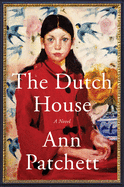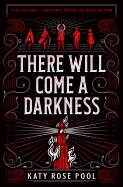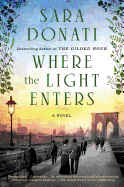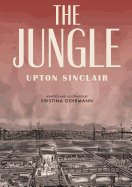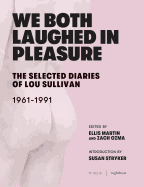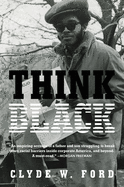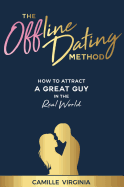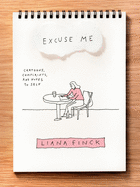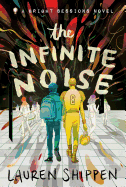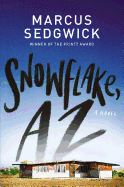Friday, September 27, 2019
 |
|
| Ally Carter | |
How do you write a book? Do you have any advice for kids who want to start writing? What's a good place to start if you want to be a writer? I've gotten those questions hundreds of times in the last decade. And they're questions I asked myself hundreds of times in the decades before that. Let's face it--writing and kids have always gone together. Story is the fuel of childhood, and with the boom in young adult fiction it's no surprise that more teens than ever are looking to go beyond fanfiction and spiral bound notebooks--they're looking to get something down on paper and then, when it's finished, they're looking to see it on shelves.
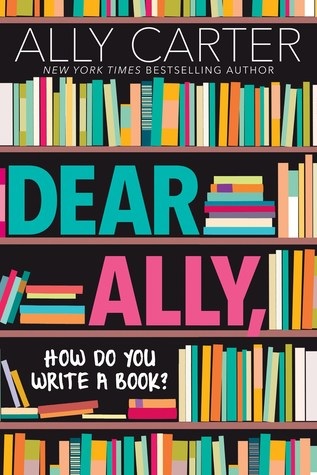 That's why I decided to answer some of the many writing-related questions that kids have. In Dear Ally, How Do You Write a Book? (Scholastic, $18.99), 30 YA authors joined me in addressing topics like where ideas come from, how to find a literary agent and how to know if self-publishing is for you. Coupled with online resources and programs like National Novel Writing Month (NaNoWriMo), there's more help than ever available to aspiring teen authors looking to find their voices and hone their craft. Some of them will be joining NaNoWriMo in November. Others will be toiling away at their own pace. Many will abandon a few projects before finding one that sticks. And some will never reach The End at all.
That's why I decided to answer some of the many writing-related questions that kids have. In Dear Ally, How Do You Write a Book? (Scholastic, $18.99), 30 YA authors joined me in addressing topics like where ideas come from, how to find a literary agent and how to know if self-publishing is for you. Coupled with online resources and programs like National Novel Writing Month (NaNoWriMo), there's more help than ever available to aspiring teen authors looking to find their voices and hone their craft. Some of them will be joining NaNoWriMo in November. Others will be toiling away at their own pace. Many will abandon a few projects before finding one that sticks. And some will never reach The End at all.
But whether these teen-written stories become the next big thing or live forever in the back of someone's locker, it's the act of writing that really matters. Because while not every teen writer becomes a published author, the vast majority of published authors started as teen writers. This new generation of writers is going to bring so many exciting things to the book world, and I can't wait to see it. --Ally Carter, author of the Gallagher Girls, Heist Society and Embassy Row series.
The World That We Knew
by Alice Hoffman
In 1941 Berlin, the Nazis are persecuting German Jews, and widow Hanni Kohn makes the terrible choice to send her 12-year-old daughter, Lea, to occupied France to try to protect her. With the help of Ettie, a rebellious daughter of a rabbi, Hanni secretly creates a golem, a mystical creature made of clay and other elements, who will stay with Lea and protect her when Hanni cannot. Alice Hoffman weaves a rich tapestry of the overlapping lives of these women, and those who love them, in her powerful novel, The World That We Knew.
Hoffman (The Rules of Magic) begins her narrative with Hanni and the desperate steps she takes to save Lea, most notably creating Ava, the golem. But when Lea and Ava must leave Berlin, the focus shifts to their journey as they try to survive the war and care for one another. At a safe house in Paris, Lea meets a young man named Julien, whose fortunes will later overlap with Ettie's in surprising ways. Meanwhile, Ettie is in hiding after a harrowing escape attempt, determined to wreak vengeance on the Nazis for what they took from her. Hoffman explores her characters' motivations for their desperate actions: revenge, fear, a desperate survival instinct, loyalty and, ultimately, love.
Powerful and moving, Hoffman's novel winds between the streets of Paris and lonely country roads, swinging between unimaginable fear and torture and small, quiet acts of courageous kindness. The world may be shifting under Lea's and Ava's feet, but the universe Hoffman creates, though dark, is shot through with light and hope. --Katie Noah Gibson, blogger at Cakes, Tea and Dreams
Discover: Alice Hoffman's powerful novel follows three brave women struggling to survive the darkness of World War II.
The Dutch House
by Ann Patchett
Built in 1922, in the Philadelphia suburb of Elkins Park (then mostly farmland), the eponymous house takes its name from the VanHoebeeks. The family lavishes their fortune on a dwelling that features a ballroom and Delft mantels imported from a castle in Utrecht. Selling off parcels of land in the aftermath of the Depression, the VanHoebeeks occupy the house until 1944, when it sits idle until it's purchased by Cyril Conroy, a World War II veteran who's beginning to dabble in real estate development.
The youngest member of the Conroy family, Danny, recounts how that optimistic purchase profoundly shapes his family's story over the next five decades. Revolted by her ambitious husband's extravagance and motivated by a strong social conscience, Cyril's wife, May, decamps for India several years after the family moves in, to work among the poor. She leaves behind three-year-old Danny and his 10-year-old sister, Maeve. After the divorce, and Maeve's departure for college in New York City, Cyril remarries--the first in a series of events that culminate in the Conroy children's eventual banishment.
Ann Patchett (Commonwealth) focuses on the sibling relationship between Maeve, who returns to the Philadelphia area to handle the finances of a frozen vegetable distributor, and Danny, who secures a medical degree but never abandons his ambition to follow his father into the real estate business. She probes their emotional bond, which is both strengthened and tested by their mother's sudden abandonment. In The Dutch House, Patchett demonstrates her gift for perceptive character portraits and her depth of understanding of the way people both damage and forgive those most dear to them. --Harvey Freedenberg, freelance reviewer
Discover: A family's life is shaped irrevocably by its relationship to an opulent house in Philadelphia's suburbs.
Where the Light Enters
by Sara Donati
Sara Donati introduced readers to cousins Anna and Sophie Savard, both physicians working in 1880s Manhattan, in her 2016 novel The Gilded Hour. In Where the Light Enters, Donati continues the sweeping family saga centered on the cousins, their careers and the people who inhabit both their lives. Sophie has returned to the city after her husband's death in a Swiss sanatorium. As she grieves, she debates returning to her obstetrics practice and begins planning a scholarship fund for young women of color who want to study medicine. Meanwhile, Anna is dealing with the loss of three children, Italian refugees, whom she had hoped to adopt. Anna's police officer husband, Jack, calls both women in to consult on a complex case involving multiple homicides of pregnant women.
Donati's cast of characters is large, encompassing Sophie's multiracial family, Jack's sprawling Italian clan and various friends and acquaintances. Among them is Québécoise medical student Elise Mercier, whose assistance proves vital to solving the case. Donati brings the chaos and color of 1880s Greenwich Village to life, while emphasizing the injustice of a system that leaves women's health largely in the hands of men. Much more than a simple mystery plot, Where the Light Enters touches on the complexities of marriage, the bonds of family (both by blood and by choice), the pernicious effects of drug addiction and the challenges Anna and Sophie face as pioneering female doctors. Readers of historical fiction will find Donati's richly detailed narrative both satisfying and thought-provoking. --Katie Noah Gibson, blogger at Cakes, Tea and Dreams
Discover: Sara Donati continues her sweeping family saga centered on two female doctors in 1880s New York.
Romance
Don't You Forget About Me
by Mhairi McFarlane
Thirty-year-old aspiring writer Georgina Horspool thought she hit her all-time low when she took a job waitressing at the worst trattoria in South Yorkshire, but her humiliation had barely begun. Her boss then uses her as a scapegoat and publicly sacks her. When she flees to her semi-celebrity boyfriend Robin's place for comfort, she finds him in flagrante with his personal assistant. Reeling from both betrayals, Georgina takes a job as a bartender, only to find that one of the pub's co-owners is her high school flame Lucas McCarthy, the one who got away. To add insult to awkwardness, grown, gorgeous, widowed Lucas has forgotten her completely.
Mhairi McFarlane's (It's Not Me, It's You) wry, witty heroine finds her way back to love in this romantic novel of comedic mishaps, unresolved grief and redemption. When the pub puts on a "Share Your Shame" writing competition, Georgina desperately wants first prize, the chance to write a newspaper column. However, if she wants to set herself apart, she'll have to speak up about the reason she and Lucas broke up 12 years ago. The truth may destroy their growing connection or set them free to begin anew.
Though punctuated by absurd comic touches including a pun-happy stripper dressed as Thor, Georgina's struggle to move forward through past trauma feels authentic and hard-earned. McFarlane ably shows that grief can arrest growth, but Georgina's sardonic first-person narration remains laugh-out-loud funny even in the darkest moments. No one will forget this witty, resilient heroine or her well-deserved happy ending. --Jaclyn Fulwood, blogger at Infinite Reads
Discover: A woman who's hiding secrets must face the past when she runs into an old flame who doesn't remember her at all.
Graphic Books
The Jungle
by Upton Sinclair and Kristina Gehrmann, illus. by Kristina Gehrmann, transl. by Ivanka Hahnenberger
Despite the gruesome images depicting the workings of Chicago slaughterhouses and meatpacking factories in the late 19th century and into the early 20th century, Kristina Gehrmann's graphic adaptation is a surprisingly gentler, kinder read than Upton Sinclair's 1906 novel. Credited with inciting the public outcry that resulted in both the Federal Meat Inspection Act and the Pure Food and Drug Act, The Jungle significantly influenced how and what Americans eat today. In this adaptation--smoothly translated from Gehrmann's German by Ivanka Hahnenberger--the human and animal suffering remain undeniable, the working conditions utterly unacceptable, the living situations horrifically bleak. The original unrelenting brutality, however, seems relatively contained, and the body count is similarly lessened; that said, reading this latest edition remains a chilling experience.
In summer 1899, a multi-generational family arrives at Ellis Island from Lithuania, carrying the hope that dedicated hard work is all they need to find solid footing in the new world. A young couple, Jurgis Rudkus and his fiancée, Ona Lukoszaite, bind the group together, accompanied by various parents, an uncle, cousin and younger siblings. The clan settles in Chicago, where a friend from the old country who runs a delicatessen welcomes and feeds them, then points them to a run-down boarding house where they will initially live. Finding employment proves challenging, but not impossible; the high-risk, grueling work, however, exacts a steep, even fatal, price.
Drawn in stark black and white with the occasional addition of red ink, Gehrmann's art is a spectacular, albeit disturbing, portal into Sinclair's history-making, policy-changing achievement. --Terry Hong, Smithsonian BookDragon
Discover: German illustrator Kristina Gehrmann transforms Upton Sinclair's 1906 classic into an extraordinary visual rendering, reimagining an urgent exposé for modern readers.
Biography & Memoir
We Both Laughed in Pleasure: The Selected Dairies of Lou Sullivan, 1961-1991
by Lou Sullivan and Ellis Martin and Zach Ozma, editors
Activist and author Lou Sullivan (1951-1991) was a pioneer in the grassroots female-to-male (FTM) transgender movement and is generally recognized as the first transgender man to publicly identify as gay. For years, because he identified as gay, he was denied medical services and sex reassignment surgery. At the time, doctors believed that transgender people should adopt stereotypical heterosexual opposite-sex gender roles. At age 14, Sullivan wrote, "My problem is that I can't accept life for what it is... like it is presented to me. I feel there is something deep and wonderful underneath that no one has found." Moving from Milwaukee to San Francisco, Sullivan worked as a woman but cross-dressed and lived as a gay man.
Finally, at age 28, Sullivan was able to find doctors to help him transition despite his sexual orientation, with testosterone and a double mastectomy. He brought visibility to trans men by founding FTM International and writing a guidebook for FTM seeking to transition. In 1986, he underwent genital reconstruction surgery and discovered he was HIV+. Sullivan's diaries are fascinating and eye-opening as well as educational, informative and refreshingly raunchy as he tries to find his place on the sexual landscape.
After his HIV diagnosis, the trans pioneer and AIDS activist wrote, "A big fear of mine is that I will die before the gender professionals acknowledge that someone like me exists, and then I really won't exist to prove them wrong." Sullivan's heartbreaking, self-effacing and inspiring diaries are a roadmap and history for trans people. --Kevin Howell, independent reviewer and marketing consultant
Discover: Three decades of fascinating and inspiring diary entries document the life and loves of female-to-male transsexual pioneer Lou Sullivan.
Think Black
by Clyde W. Ford
Clyde W. Ford struts to his first day at IBM with "a ballooned Afro, pork chop sideburns, [and] a blue zoot suit with red pinstripes," knowing only shades of the legacy he carries. In 1971, more than two decades after his father's hiring as IBM's first black systems engineer, Clyde, 19, is told he "doesn't get it"--"it" being the IBM way of a dark suit and tie, button-down shirt and matching attitude.
As Clyde digs into his father's experience, he gains fuller understanding of John Ford's path and the burdens of treading it. In Think Black, Ford winds through their lives and the corporate behemoth that influenced them. Being first carries risks, and John felt the pressures of representing his race in the face of racial codes, false diversity, sabotage and working harder for less pay. He brought change to IBM at a cost, deepening his "wound of color."
Ford illuminates the profound interaction between technology and race. A progression of machines and coding (Ford learned at a young age from his father--"For a ten-year-old, deriving 1,008 decimals from 1760 octal is no easy feat") parallels IBM's sinister history in the service of racial purity and oppression.
The Fords did not take the same path in answer to the question of who they were as black men in a society that resents their very being. In Think Black, Ford shares a peace his father never found, and food for thought for a country that hasn't come nearly as far as they did. --Lauren O'Brien of Malcolm Avenue Review
Discover: Author, psychotherapist and former IBM employee Clyde W. Ford looks back on his father's legacy as IBM's first black systems engineer and the interplay between technology and race.
Psychology & Self-Help
The Offline Dating Method: How to Attract a Great Guy in the Real World
by Camille Virginia
In The Offline Dating Method: How to Attract a Great Guy in the Real World, experienced dating coach Camille Virginia shares valuable tips for attracting romantic partners and making the most of opportunities to meet people in everyday settings. Much of her advice goes beyond the dating context and applies also to making friends and enlarging one's social circle, especially for those who struggle with social anxiety or are particularly shy.
Virginia's unapologetically upbeat attitude is a result of overcoming her own debilitating shyness, and her game plan accounts for those who struggle in social settings just as she did. In this way, her story is sympathetic and her advice credible. She's had to work at it herself and continues to do so.
Distributed across three chapters, The Offline Dating Method provides step-by-step methods and engaging anecdotes covering a multitude of social how-tos, including the crucial art of making conversation and cultivating listening skills. As part of her "rules of engagement," Virginia explains how to be approachable and how to take a conversation beyond the superficial to something deeper and more satisfying. Understanding that the many tips she provides might be overwhelming for some, she suggests making a custom personal roadmap from her suggestions and focusing only on the ones that speak to you.
One of the most important pieces of advice appears straightforward, but it's one people often forget: Be yourself. It's too emotionally draining to pretend to be someone you aren't. If you can't be your authentic self around someone, then maybe they are not right for you. --Shahina Piyarali, writer and reviewer
Discover: A guide of strategies to meet potential mates and connect with people without relying on technology.
Humor
Excuse Me: Cartoons, Complaints, and Notes to Self
by Liana Finck
Excuse Me: Cartoons, Complaints, and Notes to Self collects more than 500 of New Yorker contributor Liana Finck's stand-alone pieces. It has all the pathos of her previous book, Passing for Human: A Graphic Memoir, plus an added perk: laughs.
The book's contents, largely culled from Instagram, have been bundled into eight themed chapters. In "Animals," a snake prepares to use a typewriter with only one key: an S. In "Strangeness / Shyness / Sadness," a thought bubble beside a mermaid reads, "I want wings." Finck's images, which get a two-color treatment here, are stark and diminutive, calling to mind a trepidatious Jules Feiffer. Finck's lettering is so bracingly beautiful that it's easy to miss that some of her pieces are text-only. One page hosts what looks like a flyer bearing these words: "Engagement!!! Engagement party!!! Bachelorette party!!! Bridal shower!!! Wedding!!!!!! Honeymoon!!!! Pregnant!!!!! Baby shower!!!!!! Baby!!!!!!! The end."
Finck's talent is for clanging the bell of wry recognition, especially for those who are, like her, young women navigating the single life. For "Things I 'Liked' for Men," Finck lists 40-odd items that include "Polyamory / Scuba diving / Hegel / Gatorade." Heterosexuality gone wrong is also the subject of some of Excuse Me's most biting cartoons, as when the scales of justice show the words "He assaulted me" significantly outweighed by "No I didn't."
In her piece "Things I'd Like to Be Told," Finck lists "Whether to be serious or light." Excuse Me's audacious charm is that it's both. --Nell Beram, author and freelance writer
Discover: This collection from the New Yorker cartoonist is a delightful grab bag of pieces dark and light.
Poetry
Safe Houses I Have Known
by Steve Healey
In his third poetry collection, Steve Healey (10 Mississippi) recalls events from his life in explorations of surveillance and stability. Healey lays bare his silent turmoil as his father reveals his identity as a spy for the CIA ("I listened/ to my father but didn't say/ anything. I forgot I was there") and as his parents' marriage unravels ("I couldn't feel my body anymore/ there was a war going on/ I was trying not to be a problem"). His sense of shrinking significance reappears in "Spectral Evidence," the speaker noting, "Sometimes I put blush on my cheeks," perhaps to look more alive than he feels. Similarly, images of blood repeat over a dozen times--"I cut myself to remove the dirty part of my body,/ but I was surprised by how much I could bleed"--while juxtapositions of life and death show the ways both compete.
Healey evokes a sense of spiraling through variations on the villanelle and descriptions of "going around and around." In tandem with this dizziness is the overarching idea of the watcher and the watched, with one haiku asking, "Can you see the eyes that see/ you through swirling snowflakes?" The reader is again implicated in "Self-Surveillance": "You press the shutter button/ and fall for the first time. You get up/ and continue." Mirrors, binoculars, windows and eyes enhance this atmosphere of exposure, making an early poem's question "What does the word 'safe' mean to you?" haunt. Through clever wordplay, Safe Houses I Have Known aptly conjures the terror of a world where everyone watches everyone. --Samantha Zaboski, freelance editor and reviewer
Discover: Through observations gleaned as the son of a CIA spy, Steve Healey presents a poetry collection that grapples with an unsettling world of surveillance.
Teen Readers Recommend
There Will Come a Darkness
by Katy Rose Pool
In Katy Rose Pool's debut, an "Age of Darkness, brought by three harbingers," will be prevented--or caused--by five teenagers.
The Seven Prophets, who once governed humankind with visions of the future, disappeared a century ago. Before vanishing, the Prophets predicted an Age of Darkness accompanied by the emergence of a prophet with the power to save "or break the world entire." Now, the Hierophant, who "was not just a man with dangerous ideas... he had made himself into an idea, a new figure to worship and follow," pledges to rid the world of the magically gifted individuals known as the Graced. Amid rising tensions, the paths of five teenagers--an assassin known as the Pale Hand and her ailing sister, an exiled prince, a gambler trying to outrun his past and a leader with conflicted loyalties--collide, setting the prophecy in motion.
Pool populates her complex high fantasy world with a cast of flawed-yet-sympathetic protagonists whose choices, though motivated by good intentions, often lead them into morally fraught situations. Although the trope of "a savior, a bringer of light" prophesied to save the world may be a common one, There Will Come a Darkness is set apart by its immersive worldbuilding and compelling narrators. Pool raises difficult questions of fate, choice and morality as her characters are torn between their conflicting goals and the greater good, giving this epic tale human stakes. --Alanna Felton, age 18
Discover: Five teenagers will decide the fate of a world on the brink of destruction in this first entry to a new YA fantasy trilogy.
The Infinite Noise
by Lauren Shippen
In her debut novel, The Infinite Noise (based on her podcast The Bright Sessions), Lauren Shippen delves into the complex nature of empathy.
While noticing and reacting to others' emotions is not uncommon, feeling them physically is certainly out of the ordinary. Sixteen-year-old Caleb Michaels has this extraordinary ability and often finds it difficult to discern his own emotions from those of others. He seeks the help of Dr. Bright, a therapist who specializes in treating Atypicals, "people who are able to do things that the average human cannot." Dr. Bright explains to Caleb that he is an empath and suggests he reach out to Adam, a student suffering from severe depression; Caleb balks at the idea. Earlier, Caleb stood up to a student bullying Adam and blurted out, "Can't you see he's sad enough?"--Caleb is afraid his presence will make Adam feel worse than he already does. Much to his surprise, Adam's feelings instead provide a sense of relief from the emotive onslaught Caleb constantly feels, while Adam begins to feel less alone through Caleb's friendship. But as Adam and Caleb grow closer, Caleb begins to experience the more disturbing aspects of being an Atypical.
The Infinite Noise is written from both Caleb and Adam's perspectives, giving the reader an intimate understanding of the connection the two characters share. Shippen's frequent use of vivid imagery to describe Caleb's frustration with being an empath and Adam's overwhelming sadness and exhaustion is evocative without being overwrought. This immersive first book in an upcoming series is unlike any story about people with superpowers readers have encountered before. Note that listening to The Bright Sessions podcast before reading The Infinite Noise isn't necessary, but it may help ground readers in Shippen's atypical world. --Rachel Firman, age 17
Discover: Debut YA author Lauren Shippen's The Infinite Noise is an enthralling read with an impressive, original twist on the average superhero story.
Snowflake, AZ
by Marcus Sedgwick
In Snowflake, AZ, Marcus Sedgwick (White Crow) tosses the coming-of-age genre on its head, eschewing the stereotypical strong, charismatic hero and instead focusing on a confused young man whose unusual circumstances allow him to view the world from a distinct perspective.
From the time he steps off a Greyhound bus in the "little town with the funny name" in the Arizona desert, Ash begins to feel out of place. He finds himself living in an isolated community of people suffering from "environmental illness"; his landlady is a retired professor, his roommate is a cranky goat and his bedroom is a porch with a lovely view of the open sky. After only a short stay in the strange town of Snowflake, Arizona, Ash, too, falls victim to a mysterious illness, leaving him with questions about humanity's place in the natural world.
Sedgwick expertly weaves scientific facts and philosophical theories into his intensely introspective narrative, inviting the reader to explore the ambiguity of accepted "truths." Snowflake, AZ is not only a refreshing and entertaining twist on a familiar genre, it is also (and perhaps more importantly) a thought-provoking exploration of the past, present and future of humans relative to the natural world: "compared to the four billion years of [human] existence, the life and works of mankind seemed less important and lasting than a snowflake, melting." Snowflake, AZ is a heartwarming story about a young man and his struggle to find acceptance, and an indictment of complacency, a warning about the future humanity will encounter should we fail to change our ways. --Cade Williams, age 18
Discover: Sedgwick's captivating YA novel about a community of "sensitives" in the desert puts a new twist on the coming-of-age genre that will make readers think about humanity's place in the natural world.
| Advertisement nuremberg--only in theaters november 7 |



